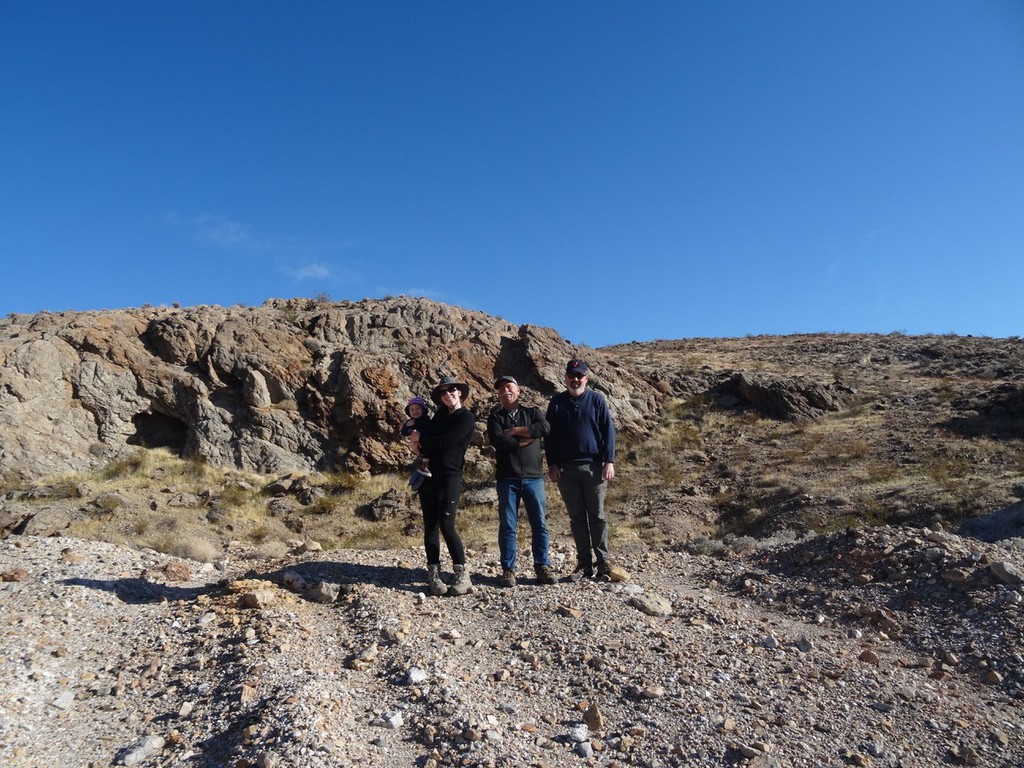Students research Mars rocks, MRSA infection controls

CHADRON – While much of the world’s attention is focused on COVID-19 and the upheaval it has wrought in daily life, scientific research projects funded by NASA Nebraska Space Grant fellowships have two Chadron State College students thinking about the possibility of life on Mars, and a third student looking at a possible avenue for stopping dangerous MRSA infections that resist treatment with conventional medicines.
For their NASA fellowships, senior geoscience major Brittany Lovett and Kinsley Mason, a graduate student in physical science education, are conducting separate research projects that could help determine if the rocks examined by NASA’s Mars rovers hold evidence that simple life forms once existed on the planet.
Senior chemistry major Joe Keating’s NASA fellowship is funding his laboratory studies of potential substances that might inhibit enzymes produced by MRSA (methicillin-resistant staphylococcus aureus), a bacterium that is resistant to many different antibiotics.
All three students are excited about participating in research projects that have real-world implications.
“This research could be used as a starting point to produce a new way to treat MRSA infections, which kill thousands of Americans every year,” Keating said.
“My work could be applicable to mission objectives of the Mars 2020 rover,” Mason said.
“Finding life on Mars will require many different lines of evidence from many different scientific fields,” Lovett said. “Perhaps I can contribute to at least one line of that evidence.”
Chadron State faculty encourage science students who are eager to learn and willing to get dirty to apply for NASA Nebraska fellowships which give them the opportunity to apply their knowledge, conduct original research and build problem-solving skills, said Dr. Mike Leite, professor of physical and life sciences.
The fellowships provide a stipend so students don’t have to work off campus, burnish their résumés, and demonstrate skills that are transferrable to good jobs in science and technical fields, said Leite, who is the adviser for Mason’s project on possible bacterial influences in formation of the iron oxide found in abundance in Martian rocks.
Collaborating with NASA scientists is a valuable opportunity for students to engage with science professionals, build networks, and try things others may not think are possible, according to Tawny Tibbits, assistant professor of physical and life sciences.
“This opens them to thinking beyond our own planet and push barriers themselves,” Tibbits said.
Tibbits is the adviser for Lovett’s research, which concerns the use of x-ray spectroscopy to differentiate between organically and inorganically formed rocks on Earth that are similar to rocks found on Mars. The project involved collecting samples of two types of rocks in the Mojave Desert in California and analyzing their composition with a portable x-ray spectroscope (pXRF), Lovett said.
Lovett’s NASA fellowship gave her the opportunity to see the newest Mars rover, which has a special pXRF device on its robotic arm, before its launch in July 2019.
“That was really neat to see the rover up close,” she said.
She was also able to consult with CSC alumnus Greg Peters, who works for NASA’s Jet Propulsion Laboratory, and meet some of the scientists who are working on the Mars 2020 mission. The research and experience gained through the NASA fellowship will further her career goal of becoming a licensed geologist and eventually setting up a geotechnical consulting firm in Oregon, Lovett said.
Mason said the NASA fellowship research could be the start of a dissertation as she advances toward her goal of a doctorate in astrobiology and eventually working for NASA.
“It helps build a stronger résumé for my PhD since the fellowship gives experience in research, grant writing, and a publication,” Mason said.
“This project has deepened my understanding of how research is done,” said Keating, who will start medical school in Washington this fall. That “will help me keep up to date with science throughout my career.”
Because of restrictions imposed by COVID-19, the three students will not have the usual opportunity to present their research to other scientists at the annual Nebraska Academy of Sciences conference, which has been canceled for this year. But tentative plans are being made for online video presentations to the CSC science community.
And in the midst of anxiety and uncertainty surrounding the pandemic’s effects on their education and all of society, Lovett said she takes comfort from NASA’s decision in early March to name the new rover “Perseverance.”
“It seems more than fitting now, for lots of reasons,” Lovett said. “The Mars mission is a glimmer of hope, something for everyone to still look forward to in 2020. We need that.”
Category: Campus News
